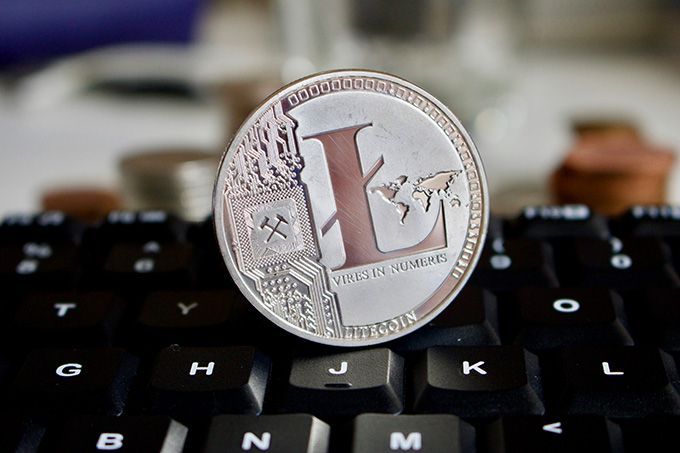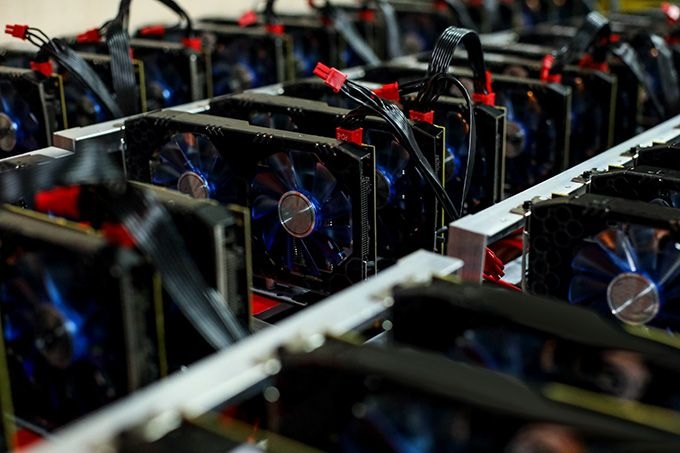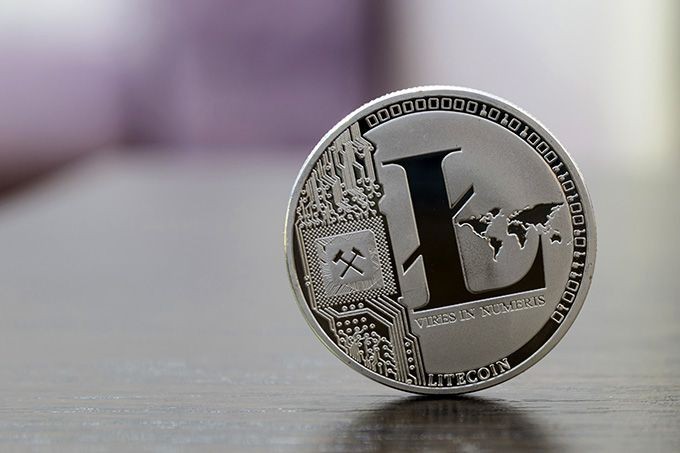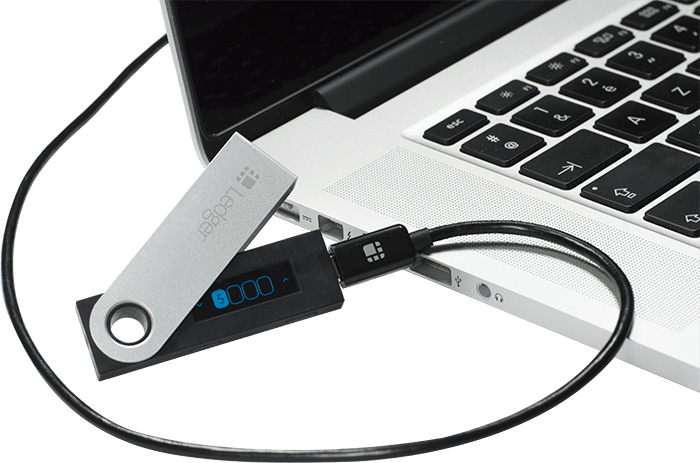
Ace quick missions & earn crypto rewards while gaining real-world Web3 skills. Participate Now ! 🔥
Hey, welcome to my "What is Litecoin?" guide!
Since the birth of Bitcoin in 2009, many other coins have entered the blockchain market. Each coin believes they offer something better, which is usually related to speed, fees or scalability.
One of these coins is Litecoin, which was created in 2011. Its aim is to be a lighter version of Bitcoin. Did you know that Litecoin’s transaction times are 4 times faster than Bitcoin’s? That’s right, and not only that, they’re cheaper too!
If you’re reading this guide, then you must still be wondering “what is Litecoin?”. Well, I’m going to tell you everything you need to know!
First, we will give you some background information about the Litecoin blockchain, and why it was created. After that, we will explain its purpose.
You are also going to learn how the technology supporting Litecoin works and some information on its security – both the good and the bad. Finally, you will also be able to figure out how to buy and store Litecoin safely and securely, both with a traditional crypto exchange (such as Kucoin), and with Simplex.
So, by the end of this guide on “what is Litecoin?” you will almost be an expert! What are you waiting for? Let’s find out how the Litecoin blockchain began!
Looking for the most secure place to buy BTC? I have collected the best-rated crypto exchanges that were approved as the safest platforms for buying BTC below, so take a look.
Pros
- 4 times faster transactions than with Bitcoin
- More scalable
- Low transaction fees
- No middlemen
Cons
- Not as popular as Bitcoin
- There are more anonymous cryptocurrencies around
Table of Contents
How Litecoin Began
 Litecoin was first created in 2011 by an ex-Google employee called Charlie Lee. Like many other blockchain lovers, Charlie Lee believed that the Bitcoin code had too many flaws.
Litecoin was first created in 2011 by an ex-Google employee called Charlie Lee. Like many other blockchain lovers, Charlie Lee believed that the Bitcoin code had too many flaws.
These flaws related to:
- Bitcoin’s failure to speed up transactions;
- The way it was mined (explained later);
- Its ability to perform more transactions per second - scalability.
Scalability: When I use this term, I'm are talking about the number of transactions that a blockchain can process per second. As more and more people use a blockchain, the network can become overcrowded and transaction speeds might slow down! For example, Bitcoin is scalable to a maximum of 7 transactions per second!
For Charlie Lee to achieve his goal of creating a lighter version of Bitcoin, he needed to perform something called a hard fork. This is where things get really interesting!
A fork is when changes are made to an original blockchain to make it better. To make things even more confusing (sorry), there are two types of forks!
A soft fork is when an upgrade is made to a blockchain, but the new block rules are still recognized by the older version. Many soft forks have been made to the Bitcoin blockchain.

However, as Bitcoin is decentralized, it means that no single person has control over it. If new changes are to be made, it goes to a voting system. Only if enough people vote in favor of a new change, it can go ahead. If not, then it won’t!
The second type of fork is a hard fork. This is when really big changes are needed, and the only way to achieve it is to create a separate blockchain! This is exactly what Charlie Lee did with Litecoin!
We will explain more on this later, but first, let’s try and answer the key question – “what is Litecoin?!”
What is Litecoin?
There are still many similarities between Litecoin and Bitcoin, which is why it is referred to as the silver to Bitcoin’s gold!
 Its main purpose is to become a global payment system. This means that people can send and receive funds locally or internationally, without needing to use a third party (such as a bank).
Its main purpose is to become a global payment system. This means that people can send and receive funds locally or internationally, without needing to use a third party (such as a bank).
To be able to answer “what is Litecoin?”, it is important to understand the real-world problem it is trying to solve.
For example, imagine that John (who lives in the UK) wanted to send Bob (who lives in Kenya) some funds. If using a bank, it would:
- Be really expensive.
- Take days to arrive.
- Require John to fill out lots of forms.
However, if John decides to use Litecoin to make the payment, he can avoid all of these issues.
Firstly, the cost of sending a Litecoin is very cheap. In fact, it costs just a few cents to send funds!
Secondly, Litecoin transactions only take 2.5 minutes to arrive, which is much quicker than a bank transfer. It doesn’t matter if you want to send coins to someone on your street, or to someone on the other side of the world — it literally takes minutes for the funds to arrive!
 Source: bitcoin-atm
Source: bitcoin-atm
Thirdly, as Litecoin is decentralized, you have full control over your funds. This means that you do not need to fill out any forms to send your coins!
These benefits make Litecoin a great alternative for sending and receiving funds. So, now that you can answer the question “what is Litecoin?”, let’s find out how the technology works!

Did you know?
All Crypto Exchanges may look similar to you but they're NOT all the same!
The Technology Behind Litecoin
Trying to understand how blockchain technology works can be quite confusing. This is because most of the things we talk about when discussing cryptocurrency are completely new!
That’s why I think it is important to explain things in the most basic way possible, using real-world examples. So, let’s find out a bit more about Litecoin blockchain technology.

In our previous example, we explained how John (from the UK) wanted to send Bob (from Kenya) some funds. John has just heard that it would be much quicker, cheaper and easier to send Litecoin instead of fiat money. Let’s find out how he can do this.
- To receive funds, you need a Litecoin wallet address. Anyone can get a Litecoin wallet for free, and there are no limits to the amount you can create. Think about it like a bank account.
- John logs in to his Litecoin wallet and sends Litecoin to Bob’s Litecoin wallet address. John decides to send Bob 10 Litecoins.
- Once John sends the funds, they are then sent to the Litecoin blockchain.
- There will be thousands of other transactions that are also going through the Litecoin blockchain. Every 2.5 minutes, a new block is created. Think about a block as a container of a transaction.
- The block (or container) carries lots of different transactions, including John’s. Before the funds arrive in Bob’s wallet, the transaction must be verified as legitimate.
- As Litecoin is decentralized, there is no single authority to confirm a transaction. Instead, a group of volunteers called miners use their computing power to solve really difficult puzzles. This is how transaction blocks (or, in our case, containers) are verified.
- After 2.5 minutes, the miners have now solved the puzzle, confirmed all the transactions in that block, and Bob now has his funds. It’s as simple as that!
Note: When I use the term "fiat money", it basically means real-world money. USD, GBP, EUR, and YEN are all examples of fiat currencies!
Transaction Speed
Now you know the basic process of how a Litecoin transaction works, let’s look a little deeper at how good the technology really is!
So, the whole point of Litecoin was to improve on Bitcoin’s flaws, right? Well, then - how do they compare? Well, each Bitcoin block takes 10 minutes to confirm. Litecoin is 4 times faster than this, at 2.5 minutes. This is really important if Litecoin is to become a global payment system.
After 2.5 minutes, the block has 1 confirmation. This means that it can’t be reversed. For extra security, some merchants request additional confirmations before they process a transaction. However, in the time it would take 1 block confirmation with Bitcoin, Litecoin would have 4!
Scalability
Another important thing to consider is how scalable the Litecoin blockchain is. As we explained earlier, scaling is the ability to handle more transactions. However, there is always a limit to what is possible.
Bitcoin is only able to process a maximum of 7 transactions per second. Ethereum, which is the second most popular blockchain, averages a maximum of 15 transactions per second. How many do you think Litecoin can handle?

Well, Litecoin is able to process a maximum of 56 transactions per second! This makes it much faster than both Bitcoin and Ethereum put together! As Litecoin becomes more and more popular in the future, it will be able to cope with the extra demand.
Latest Binance Coupon Found:Sign up on Binance and claim up to $600 worth of rewards for completing simple tasks. Use Binance referral code (49316610) to activate the offer while it's still valid!
Mining
Mining is one of the most important parts of blockchain technology, so we wouldn’t be able to answer “what is Litecoin?” without talking about it!
Basically, mining is the process that allows people to send and receive funds without needing a third party! There are many different types of mining though, but they are each a type of consensus model.
Litecoin uses a consensus model called Proof-of-Work, or PoW for short. Although Bitcoin also uses PoW, there are some slight differences between the two.
Bitcoin use something called SHA-256 hashing.

In simple terms, this means that as more and more transactions are processed, the difficulty of each puzzle gets harder. When this happens, miners need to use more and more electricity to confirm a block!
These days, Bitcoin miners need to use ASICs (Application-specific integrated circuits) hardware, which is really expensive. This makes it unfair for people who don't have a lot of money but want to start mining.
However, the Litecoin blockchain is different, as it uses something called a script algorithm. Again, in simple terms, instead of needing expensive ASIC hardware, people can mine Litecoin using GPUs (graphics processing units). GPUs are much cheaper, meaning that more people can afford to mine!

This is great for miners with less money. However, in the future, it might be possible that ASIC hardware will be used to mine Litecoin. So, when it does, it means that those who can afford expensive equipment will have more chance of receiving Litecoin mining rewards.
So, if you are looking to mine Litecoin, then start now before it’s too late!
If you have read our “what is Litecoin?” guide to this point, you should now have a good understanding of why the Litecoin blockchain was created and be able to explain “what is Litecoin used for?”.
Now, we are going to talk about Litecoin’s security features!
Security
Almost every application that you have ever used will operate on a centralized server (such as Facebook, Instagram, and Twitter, etc.). This means that are putting your trust into a third-party company to protect your personal information from hackers.
Your bank is another good example of a centralized company. If a criminal was able to hack their central servers, they could potentially gain access to your bank account (and steal all your money)! Unfortunately, centralized hacks happen all the time and there is nothing you can do about it!
That was until the creation of decentralized payment systems like Litecoin! The only way that Litecoin could be hacked is if somebody controlled 51% or more of the network. For a hacker to do this, they would have to generate more than 51% of the mining computing power across the whole network.
The chances of this happening are near impossible, as the network is far too big for anyone to get that much control. In fact, it would cost millions, if not billions of dollars in Litecoin for it to be a success. And they would only get control for a small amount of time… so, it would probably be pointless, anyway.

The most important thing is how secure your Litecoin’s are. This depends on how/where you choose to store them. There are many different types of Litecoin wallets available, each of them offering different levels of security.
Think about how you would store your money in the real world. Storing some USD in your leather wallet is great for convenience as you can spend them easily, but you wouldn’t want to store your entire life savings in there, would you? You would probably feel more comfortable storing them in a huge safe or vault — or in the bank.
Well, this is very similar to how you would store your Litecoin. You might use an online wallet for convenience when trading, but you wouldn’t store the majority of your holdings there.
So, let me show you how to balance security with convenience.
Desktop or Mobile Wallet
If you have a small number of coins and you want easy and quick access to them, it is best to use a desktop or mobile wallet (software wallets). These are great as they do not take up much space on your computer or mobile, and they are reasonably secure.

With these software wallets, you are the only person that has access to your private keys. Not even the development team of the wallet can see them.
You can also set up recovery options on your software wallet. So, if you forget your password or your computer breaks, you can still get access to your coins.
There are lots of different software wallets to choose from, with Exodus being one of the more popular picks.
Hardware Wallets
In the real world, you wouldn’t want to store your life savings in your leather wallet, would you? This is the same when storing your Litecoin!
The safest way to hold your coins is to use a hardware wallet. This is the cryptocurrency equivalent of a vault!
Hardware wallets allow you to store your coins offline, meaning that they are never connected to the internet. Although it is less convenient if you need to send or receive your coins quickly, it is the safest option.
The most popular of these is Ledger Nano X. Even though hardware wallets come with a price, you have to consider the importance of security, especially if you hold lots of coins.
Ledger Nano X also allows you to view your recovery password on the screen. By writing this down and storing it somewhere safe, you can regain access to your Litecoin if somebody stole the hardware device.

If you have read our “what is Litecoin?” guide so far, you should now know what it is, how the technology works and how to safely store it!
Now we are going to tell you about some of the ways that criminals use cryptocurrency.
How Can It be Abused?
Like most new technologies, there will always be bad people that try to abuse it for their own gain. Unfortunately, cryptocurrencies are not free from this abuse.
One of the issues that governments are worried about is that blockchain technology can be used for money laundering. This is the act of criminals trying to hide their illegal money from the government so that the government doesn’t take it.
As Litecoin allows people to send and receive funds anonymously, it is ideal for those looking to launder their criminal earnings.
Although every transaction is available to view on the blockchain, the only information that is displayed is wallet addresses — which isn’t linked to the real-world identities of the sender and receiver.
This is very similar to tax havens, where criminals hide their money so that tax authorities don’t know how much they have.
Another concern is that cryptocurrencies are commonly used as the currency of the dark web. The dark web is where illegal goods such as drugs, weapons, and stolen credit cards are bought and sold online.
An example of one of these dark web websites is Silk Road. Silk Road was well known for all kinds of illegal activities, which was all paid for using Bitcoin. The site was closed down by the FBI in 2013 — but more than $1 billion worth of Bitcoin transactions went through the website before this!
It is important to remember that even though Litecoin and other cryptocurrencies have been used for crime, these crypto abusers only account for a small number of users. Most people use cryptocurrency because it’s so easy, cheap and quick to send and receive funds.

Did you know?
All Crypto Exchanges may look similar to you but they're NOT all the same!
Conclusion
And that’s it, the end of our complete guide to “what is Litecoin?”. But before we shut you out, here’s a quick recap of some of the features:
- Litecoin Total Supply: 84 million coins
- Litecoin Transaction Time: 5 minutes
- Maximum Transactions Per Second: 56
- First Ever Transaction: 13 October 2011
- Mining: Proof-of-Work (Scrypt)
It’s hard to cover such a cool cryptocurrency in such a small amount of words, but you should now have a good understanding of what is it and why it was created. You should also have a good understanding of how the technology works, and how it is different from Bitcoin!
Just because Litecoin transactions are quicker and cheaper than Bitcoin’s, you shouldn’t assume that it is the better option. If you are looking to invest in one of these cryptocurrencies, I strongly advise that you do thorough research into both cryptos before doing so.
However, if you like the sound of it, you might be wondering how to get Litecoin. If so, you can follow our guide here on where and how to buy cryptocurrency, and which exchange is going to be best to do so!

Don’t forget, if you do buy some Litecoin of your own, make sure you re-visit the wallet section of this guide to make sure it’s stored safely! Or, you can see our full guide on how to choose the best cryptocurrency wallet!
Now, to summarize the process of how you would go about getting yourself some Litecoin and then storing them in a wallet:
- First, visit Kucoin and register there. If you're not keen on buying Litecoin this way, you could also do so via Simplex - here, the process would be much faster and simpler, and you could buy LTC with your credit or debit card;
- If you took the Coinbase route, after registration and verification, you'll be able to purchase the cryptos of your choice - in this case, Litecoin. Do so with the payment method of your choice.
- Utilizing the Simplex route, things are pretty straightforward - just enter the details that are prompted upon you choosing the amount of Litecoin you'd like to buy, and proceed with the transaction.
- Wallet-wise, if you're planning to store your Litecoin for a longer period of time, and want the best security available, hardware wallets are your best bet. The Ledger Nano X is one of the best alternatives in this field.
So, what do you think about our “What is Litecoin” guide? Do you now have a better understanding of how the Litecoin blockchain works and the benefits it has over normal fiat currency?
Do you think it is a better alternative to Bitcoin? Let us know your thoughts!
The content published on this website is not aimed to give any kind of financial, investment, trading, or any other form of advice. BitDegree.org does not endorse or suggest you to buy, sell or hold any kind of cryptocurrency. Before making financial investment decisions, do consult your financial advisor.













